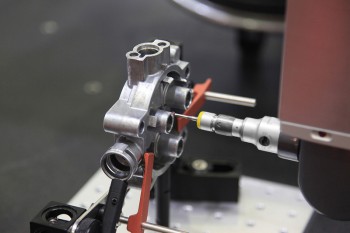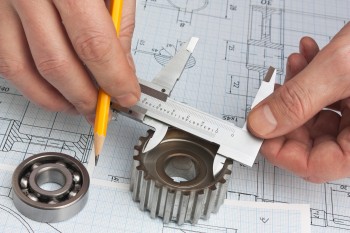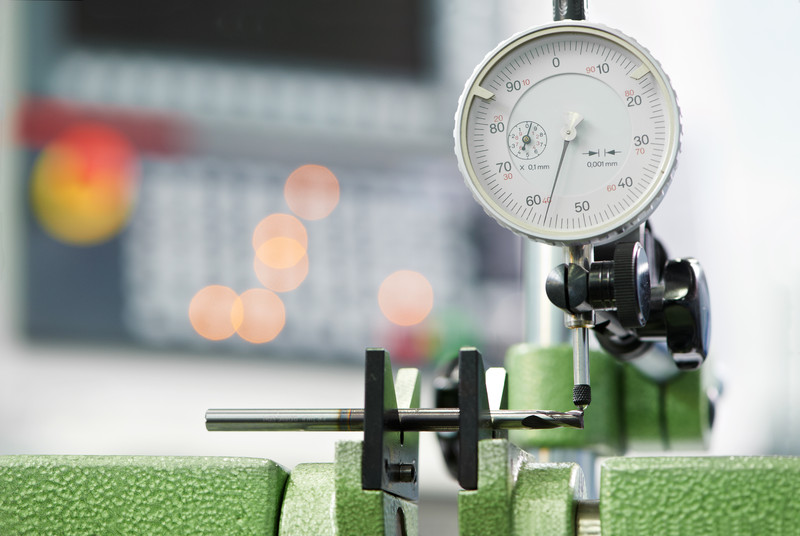Could you imagine what a football game would be like if there was no one around to enforce the rules of the game? Or imagine a basketball game with no referees; that game would probably resemble a game of street ball complete with fights and elbowing with no penalties. There are referees in basketball and football to keep the players in line and make sure that they follow the rules for a fair and safe game. Quality engineers are the referees of the automotive engineering world and they work across all phases of product development to make sure that processes and procedures are followed, quality designs are sent to production, all products meet specifications, and incoming parts are built to specification. They also interface with the customer if a quality issues are discovered.
Validate new product designs
One of the most fascinating aspects of being an automotive engineer is being involved in cutting edge technology and helping to bring new technology and benefits to the automotive world. New product designs are introduced when new technology is available that has evolved enough to be incorporated into a product design. One area that is exceptionally important in today’s markets is fuel economy and reduced emissions to help reduce our dependence on fossil fuels and our overall impact on the environment. There is a worldwide organization called the Global Fuel Economy Initiative (GFEI) which is leading a consortium of engineers and designers worldwide to promote the design of innovative new vehicles that use less fuel. The GFEI allows engineers to collaborate worldwide on new ideas for reducing fuel consumption and sets the standards to assess what reduced emissions and fuel efficiency mean. This is where quality engineering steps in to collaborate with designers. Also, within the United States, the EPA has established requirements that all vehicles must meet. Quality engineers will test each vehicle design to ensure that these requirements are met.
At the beginning of the design process the design team will outline a list of product specifications that a vehicle is designed to meet. These specifications will include a large range of information including performance, horsepower, vehicle durability, acceleration, emissions, materials, environmental, etc. and will cover all areas of the vehicle from the tires to the processors in the control modules. Everything within the vehicle must meet the process specification and it’s the responsibility of the quality engineer to test the vehicle and all sub-components to ensure that they do. When a vehicle is ready to start production, the quality engineer will team up with technicians and measurement labs and systematically go through all the product specifications. They will test that the vehicle meets all specifications and will compile a detailed report of all the test results for the vehicle proving that it met all the product specifications.
Maintain a high quality production process
Another quality engineering role within the automotive industry is to work with the day-to-day assembly process and address quality issues as they come up in production. The quality engineer will establish quality systems for the production process and control charts that will allow them to monitor the production process and identify when the process is moving outside acceptable specifications before poor quality parts are manufactured. Control charts are statistical tools that monitor the key parameters of the process to ensure that these parameters stay within the upper and lower control limits. When an issue is identified, the quality engineer is notified. He/she will begin to root-cause what is going on to cause the process to produce parts that are out of spec. The quality engineer will put controls in place that will stop out of spec parts from being produced, conduct root-cause analysis for the problem, and then work to implement a fix so that the problem does not occur again. Quality engineering is not just important when a process goes out of spec; quality engineers are very proactive and will constantly be monitoring the production process and looking for continuous improvement ideas to make the process more robust and less prone to quality issues.
Manage customer quality issues
One very important aspect of the quality engineering role within the automotive industry is dealing with customer quality issues as the customer quality engineer. Despite all the production controls that are put in place and validation testing that is completed, there are times when a quality issue gets to the customer. When a quality issue is identified then the customer quality engineer takes charge and puts a corrective action plan in place. Sometimes the issue may be minor like a cap may have a tendency to fall off after the vehicle has been used for a period of time. However, other times it could be a severe issue such as an air bag failing to deploy or an ignition switch that shuts down the vehicle during operation. When a severe issue is identified then a recall is issued and a fix is applied to each vehicle in the field.
One of the biggest fears in the automotive industry is that a quality issue sneaks through all the quality control systems that the automotive industry has in place and reaches the end customer. If you are lucky these issues will be minor, but sometimes there are major issues that have caused people to be injured or even killed due to a vehicle failure. When a major issue is identified, then a recall is issued which requires the automotive manufacturer to correct the issue at their cost. Managing recalls is a major part of the customer quality engineering role within the automotive engineering field.
Besides managing quality issues the customer quality engineer must work with sales and the customer to clearly communicate what the issue is and how the fix will prevent this issue from ever happening in the future. Most of all, the customer quality engineer must re-instill the customer’s confidence in their vehicle and assure them that the engineering team has fixed the problem. Communication skills are important in this role so that the problem can be explained to concerned customers to ensure that their vehicle is safe and that the manufacturer stands behind the vehicle.
 Building a high quality supply base
Building a high quality supply base
One aspect to the quality engineering role that is often overlooked is the role of the supplier quality engineer. This person is responsible for the incoming materials and components from suppliers. He/she must put quality guidelines and controls in place to ensure that only the highest quality parts meeting all specifications are allowed into the production process. The supplier quality engineer works directly with the suppliers and will review and approve the quality processes that the supplier uses to ensure their part is built correctly. If a quality issues arises during production, the supplier quality engineer will work with the supplier to complete a root- cause analysis and help to put controls in place so that the issue does not occur again. The supplier quality engineer will interface with the purchasing department and articulate the quality requirements and specifications that incoming parts must meet. These requirements will be included in the supplier contract and incoming inspection requirements. The supplier quality engineer role is the first step in manufacturing high quality vehicles since without quality in, you cannot get good quality products to the customer.
Facilitate audits and maintain documentation
Finally, one of the major roles of a quality engineer is documentation that ensures the companies have met all the requirements required by the certification bodies within the automotive world such as, Six Sigma, ISO 9000, TS16949, and other certifications required to do business in the automotive industry worldwide. Additionally, quality engineers coordinate internal certifications such as calibrations for labs, production and engineering tools used day to day for testing, production and design work. Quality engineers will maintain both internal and external documentation. They must have it available when audits are conducted and facilitate both internal audits to check status and external audits with governing bodies to maintain certifications. The quality engineering role in maintaining this documentation and keeping all certifications is critical, since without them the company cannot conduct business. For example, without CE mark certification companies cannot conduct business within the European Union.
Quality engineering is one of the best ways to oversee the entire automotive design, development and manufacturing process. If you are considering a career in automotive engineering this is one of the best areas in which to start your career and develop an understanding of the entire automotive engineering process, while you work to make the highest quality vehicles for your customer.


Comments 1
Really a helpful topic. I am a Mechanical Engineer. I’m performing my duty as a Qaulity Inspector. I hope I will build my Career in Quality field.